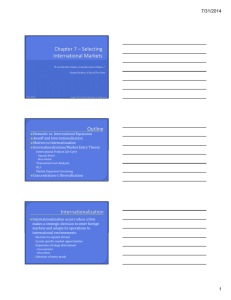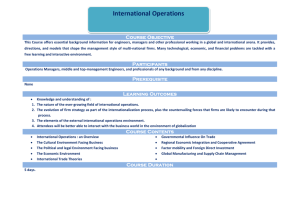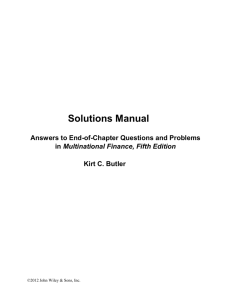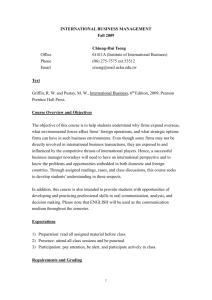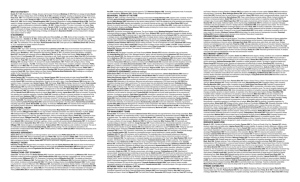記錄 編號 6885 狀態 NC094FJU00457084 助教 查核 索書 號 學校
advertisement
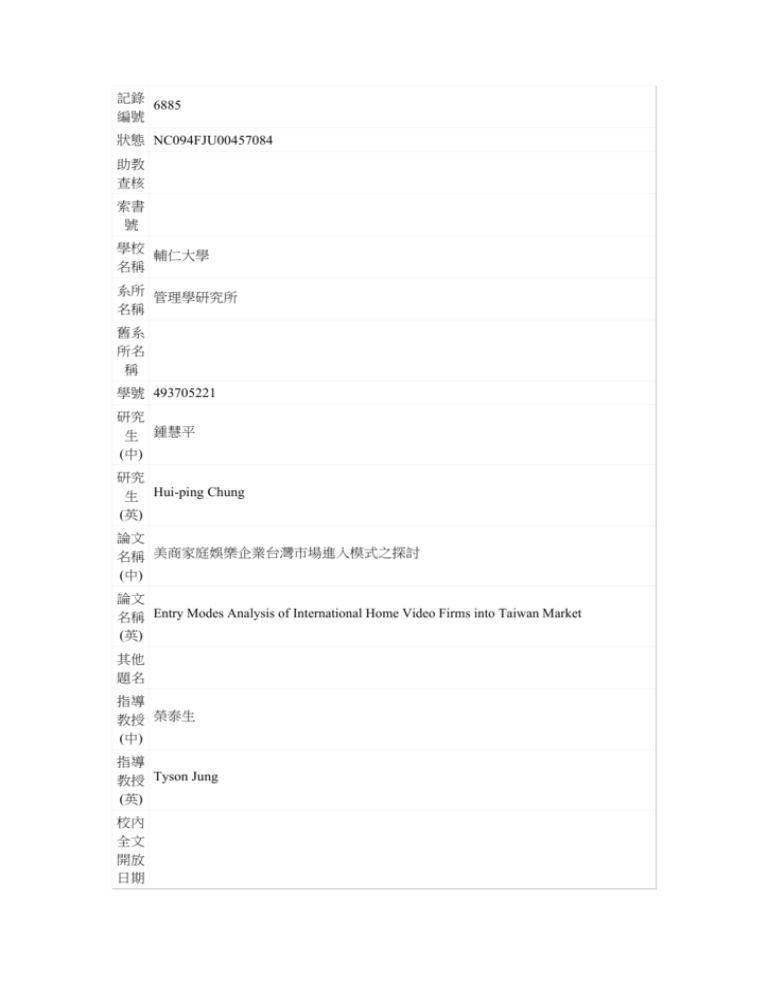
記錄 6885 編號 狀態 NC094FJU00457084 助教 查核 索書 號 學校 輔仁大學 名稱 系所 管理學研究所 名稱 舊系 所名 稱 學號 493705221 研究 生 鍾慧平 (中) 研究 生 Hui-ping Chung (英) 論文 名稱 美商家庭娛樂企業台灣市場進入模式之探討 (中) 論文 名稱 Entry Modes Analysis of International Home Video Firms into Taiwan Market (英) 其他 題名 指導 教授 榮泰生 (中) 指導 教授 Tyson Jung (英) 校內 全文 開放 日期 校外 全文 開放 日期 全文 不開 放理 由 電子 全文 送交 國 圖. 國圖 全文 開放 日 期. 檔案 說明 電子 全文 學位 碩士 類別 畢業 學年 94 度 出版 年 語文 中文 別 關鍵 字 資源基礎論 國際化策略 進入模式 多角化 (中) 關鍵 字 resource-based theory international strategy entry mode diversify strategy (英) 曾幾何時,家庭影碟的收益已佔全球娛樂產業龍頭「好萊塢美商五大影 業」總收入的 7 成,反客為主地取代電影院線收入,躍升為金牛事業。 20 (中) 世紀初,好萊塢在全球電影市場獨占鼇頭一百年,在跨入千禧年後,隨著 摘要 全球娛樂消費支出逐年提升,亞洲經濟發展起飛,中國大陸市場開放,亞 洲各國娛樂事業而更蓬勃發展。隨著時代的變遷,美國好萊塢電影產業並 沒有因此衰退,反而透過敏銳的市場嗅覺、科技的研發、高度彈性的組織 運作並靈活運用企業本身的優勢,成功讓 DVD 大舉滲透國際市場,且在 世界各國大放異彩。此時,不禁要深思,正值全球娛樂消費不斷成長之 際,台灣的娛樂產業該如何借鏡美國,在這充滿競爭及機會的時代裡取得 一席之地。 本研究之目的,是以美商五大影業的分公司和代理商做為研 究對象,並參考家庭娛樂事業的進入模式類型為主體,探討核心資源、多 國籍經營策略和多角化策略此三大構面對於進入類型的影響程度,企圖驗 證: 1.核心資源的強弱是否會影響進入模式。 2.當多國籍經營策略的不同 時,是否會影響進入模式的選擇。 3.多角化事業的相關或非相關事業發展 對於進入模式是否會有影響。 研究結果發現,除「多角化策略」中的相 關事業多角化與非相關事業多角化變數外,「組織能力」、「無形資產」 及「多國籍經營策略」中的策略變數皆會影響市場進入模式的類型。基於 研究發現,本研究建議相關娛樂產業進軍國際時,可以其本身核心資源的 強弱和國際化策略目標及方向,來考量與訂定較適切的進入模式類型以取 得市場。 For years, home video business has accounted for 70% gross of Hollywood Major 5, the top 5 global entertainment leaders, to replace the theatrical position turning into a Cash Cow business. Hollywood movie has been prevailed the market over a hundred year since 20th century. After millennium, entertainment business in Asia is also burgeoning in consequence of increasing global entertainment expenditure, Asia economic growth and China’s open-door policy. With penetrating market sense, new technology R&D, highly-flexible organization as well as elastic and effective use of advantage in itself, Hollywood Majors always synchronize the fluid world 摘要 and successfully pushed DVD forward penetrating international market. At the moment, we contemplate how our entertainment firms can learn from Majors to get share of foreign market in a era full of competition and opportunity. The purpose of (英) the paper is to probe into how 3 propositions-resource-based theory, international strategy and diversify strategy– influence the entry decision of home video licenses and franchises. We try to demonstrate the following: 1. Does the dissimilar strength of core resources affect entry mode? 2. Does different international strategy result in different entry mode? 3. Is there any influence of related or un-related diversify strategy on the choice of entry mode? The result indicates that entry mode decision is affected by 3 proposed propositions except for diversify strategy. Based on the findings, the suggestion to related entertainment firms is to take into account their strength of core resources and goal and course of international strategy when entering the global marketplace so as to make a appropriate decision on the choice of entry mode. 第壹章 緒論 1 第一節、研究背景 1 第二節、研究動機 10 第三節、研究目 論文 的 15 第貳章 文獻探討 17 第一節、多國籍經營策略 17 第二節、國際市場 目次 進入模式 31 第三節、資源基礎理論 38 第四節、多角化策略 46 第參章、 研究方法 55 第一節、研究流程 55 第二節、研究架構 56 第三節、操作性 變數衡量 56 第四節、個案研究方法 58 第五節、個案研究的品質-信度與 效度 59 第六節、個案的選擇 59 第七節、個案的蒐集 60 第八節、資料分 析方法 61 第肆章、個案分析 63 第一節、A 個案分析-華納 65 第二節、B 個案分析-迪士尼 72 第三節、C 個案分析-新力 78 第四節、D 個案分析 -二十一世紀福斯 84 第五節、E 個案分析-UIP 聯合影業 86 第六節、個 案綜合分析與發現 89 第五章、結論與建議 95 第一節、研究結論 95 第二 節、研究建議 96 第三節、研究限制 97 第四節、後續研究 97 參考文獻 99 一、中文部分 1. 中華經濟研究院(1991)。廠商對外投資對我國經濟發展 之影響-東南亞地區調查研究。 2. 司徒達賢(1995)。資源基礎??與企業 競爭優勢關係之探討。台北市:?政院國家科學委員會。 3. 行政院主計處 (2005)。2005 年台灣民間消費型態。 4. 何雍慶(1993)。實用行銷管 理。台北市:華泰書局。 5. 吳思華(2000)。策?九?:策?思考的本質。 台北市:臉譜。 6. 李家群(1996)。多角化與國際化策略配合對企業經營 績效關係之研究:核心競爭力基礎觀點之實證。中原大學企業管理研究所 未出版碩士論文,台北市。 7. 李文瑞、曹為忠、陳旭銘 (2001)。台商 赴大陸投資進入模式影響因素之研究 —小企業之實證分析。中山管理評 論,台北市,9 卷,1 期,61-86。 8. 徐中琦(1996)。多國籍企業新挑 戰 —國際營運與組織能?。經濟情勢暨評?,第 2 卷,第 2 期,43-57。 9. 翁景民、曾義明(1995)。國際進入模式決策之折衷理論暨國際進入模式 組合之研究。台大管理論叢,第 6 卷,第 2 期,25-60。 10. 陳明俊 (1993)。台灣國際市場進入與組織調適。國立政治大學企業管理研究所 參考 碩士論文,台北市。 11. 黃致偉(1999)。台灣資訊電子過計畫成長策略 之研究。國立東華大學國際企業研究所未出版碩士論文,花蓮縣。 12. 榮 泰生(2005)。全球行銷管理。台北市:滄海書局。 13. 蕭雅芳 (1995)。我國投信業國際化之探討。台灣大學商學研究所碩士論文,台 北市。 二、英文部分 1. Aaker, D. A. (1984). Developing business strategies. 文獻 New York: John Willey and Sons. 2. Agarwal, S., & Ramaswami, S. N. (1992). Choice of foreign market entry mode: Impact of ownership, location and internalization factors. Journal of International: Business Studies, 23 (1), 1-28. 3. Anderson, E., & Gatignon, H. (1986). Modes of foreign entry: A transaction cost analysis and propositions. Journal of International Business Studies, 17 (3), 1-26. 4. Ansoff, H. I. (1957). Strategies for diversification. Harvard Business Review, 35 (5), 113-124. 5. Ansoff, H. I. (1965). Corporate strategy: An analysis approach to business policy for growth and expension. New York: McGraw-Hill. 6. Barkema, H., & Vermeulen, F. (1998). International expansion through star-up or acquisition: A learning perspective. Academy of Management Journal, 41, 7-26. 7. Bartlett, C. A. (1986). Organizational influence on challenges for MNCs: In Porter, M.E., competition in global industries. Boston: Havard Business School Press, Winter, 28, 2. 8. Bartlett, C. A., & Ghoshal, S. (1989). Managing across borders: the hamilton transnational solution. Boston: HBS. 9. Barney, J. B. (1999). How a firm’s capabilities affect boundary decisions. Sloan management review, Spring, 137-145. 10. Barney, J. B. (1991). Firm resources and sustained competitive advantage. Journal of Management Science, 17, 99-120. 11. Berry, C. H. (1975). Corporate growth and diversification. Princeton: Princeton University Press. 12. Bilkey, W. J., & Tesar, G. (1977). The export behavior of small sized wisconsin manufacturing firms. Journal of International Business Studies, 3, 93-98. 13. Booz, A., & Hamilton F. (1985). Diversification: A survey of european chief exectives. NY: Inc. 14. Brouthers, K. D. (1995). The Influence of International risk on entry mode strategy in the computer software industry. Management International Review, 35, 1, 7-28. 15. Buckley, P. J., Newbould, G. D., & Thurwell, J. (1978). Going international: The experience of smaller companies overseas. London: Associated Business Press. 16. Buckley, P. J., Newbould, G. D., & Thurwell, J. (1979). Going international the foreign direct investment behavior of small UK firms. In Research on the Internationalization of Business, Proceedings of Annual Meeting of European International Business Association, Uppsala, Sweden, Pecember, 72-87. 17. Campbell, A. J., & Verbeke, A. (1994). The globalization of service multinationals. London: Long Range Planning, 95-102. 18. Chakravarthy, B. S., & Howard, V. P. (1985). Strategic planning for a global business. Columbia Journal of World Business, Summer, 3-10. 19. Chandler, A. D. (1962). Strategy and structure: Chapters in the history of American industrial enterprise. Cambridge, Massachusetts: The M. I. T. Press. 20. Chang, S. J., & Rosenzweig, P. M. (2001). The choice of entry mode in sequential foreign direct investment. Strategic Management Journal, 22, 747-776. 21. Chatterjee, S., & Wernerfelt, B. (1991).The link between resources and type of diversification: theory and evidence. Strategic Management Journal, 12, 49-68. 22. Collis, D. J., & Montgomery, C. A. (1995). Competing on resources: Strategy in the 1990s. Harvard Business Review , 118-128. 23. Coyne, K. P. (1986). Sustainable competitive advantage: What it is and what it isn't. Business Horizons, 54-61. 24. Czinkota, M. R., Rivoli, P., & Ronkainen, L. A. (1992). International Business (2nd ed.). Dryden Press. 25. Daniels, J. D., & Radebaugh, L. H. (1998), International business: Environments and operations(8th ed.). Addison-Wesley. 26. Davidson, W. H. (1980). The location of foreign direct investment activity: Country characteristics and experience effect. Journal of International Business Studies, Fall, 12, 9-22. 27. Deresky, H. (1994). International management-managing across borders and cultures. New York: Harper Collins College Publishers. 28. Douglas, S. P., & Craig, C. S. (1986). Global marketing myopia. Journal of Marketing Management, 2, 155-159. 29. Dolwing, P. J., & Schuler, S. (1990). International dimension of human resource management. PWSKENT Publish Co. 30. Dunning, J. H. (1981). International production and the multinational enterprise. London: George Allen and Unwin. 31. Dunning, J. H. (1993). Multinational enterprises and the global economy. New York: AddisonWesley. 32. Dunning, J. H. (1993). Internationalizing Porter's diamond. Management International Review, 33, 7-16. 33. Erramilli, M. K. (1991). The experience factor in foreign market entry behavior of service firms. Journal of International Business Studies, 22, 497-501. 34. Erramilli, M. K., & Rao, C. P. (1993). Service firms’ international entry mode choice: A modified transactioncost analyis approach. J Mark, 57, 19-38. 35. Frankfort-Nachmias, C., & David, N. (1992). Research methods in the social sciences. New York: St. Martin's Press, Jun. 36. Glueck, W. F. (1976). Management. Ihh: Hinsdale, The Dryden. 37. Gort, M. (1962). Diversification and integration in American industry. Princeton University Press. 38. Grant, R. M. (1991).The resource-based theory of competitive advantage: Implications for strategy formulation. California Management Review, Spring, 114135. 39. Grant, R. M., & Craig, J. (1993). Strategic management: The fast-track MBA. Nichols Publishing Company. 40. Griffin, D., & Pustay, A. (2002). International business-a managerial hitt. M.A., R.E. 41. Hambrick, D. C. (1983). Some tests of the effectiveness and functional attributes of miles and snow’s strategic types, Academy of Management Journal, 26, 5-26。 42. Hennart, J. F. (1982). A theory of multinational enterprise. Ann Arbor: The University of Michigan Press. 43. Hill, C. W., & Jones, G. R. (1995). Strategic management theory: An integrated approach(3rd ed.). Boston: Houghton Mifflin Company,.. 44. Hill, C. W. L., & Kim W. C. (1988). Searching for a dynamic theory of the multinational enterprise: A transaction cost model. Strategic Management Journal, 9, 93-104. 45. Hoskisson, H. K. (1997). International diversification: Effects on innovation and firm performance in product-diversified firms. Academy of Management Journal, 40, No.4, 767-798. 46. Johanson, J., & Vahlne, J. (1977). The internationalization process of the firm: A model of knowledge development and increasing foreign market commitments. Journal of International Business Studies, 8, 23-32. 47. Johanson, J., & Mattson, L. G. (1987). Strategy in Global Competition (2nd eds.). London, UK: Routledge. 48. Jones, G. R., & Hill, C. W. L. (1998). Transaction cost analysis of strategy-structure choice. Strategic Management Journal, 9, 2, 159-172. 49. Kamien, M., & Schweartz, N. (1975). Market structure and innovation - A survey. Journal of Economic Literature, 13, 1, 1-37. 50. Kanter, R. M. (1994). Collaborative advantage: The art of alliances. Harvard Business Review, 96-108. 51. Kim, W. C., & Hwang, P. (1990). Global strategy and multinationals entry mode choice. Journal of International Business Studies, 29-53. 52. Kogut, B. (1985). Designing global strategies: Comparative and strategies groups. Journal of International Business Studies, 15, 151-168. 53. Kogut, B., & Singh, H. (1988). The effect of national culture on the choice of entry mode. Journal of International Business Studies, 19, 579-599. 54. Kotler, P. (1994). Marketing management: Analysis planning, and control(8th ed.). Prentice-Hall. 55. Kojima, K. (1982). Macroeconomic versus international business approach to direct foreign investment. Hitotsubashi Journal of Economics, 23, 1-19. 56. Kulkarni, S. P. (2001). The influence of the type of uncertainty on the mode of international entry. American Business Review. 57. Kumer, V., & Subramaniam, V. (1997). A Contingency Framework for the Mode of Entry Decision. Journal of World Business, 32, 53-72. 58. Lafontaine, F. (1999). Myths and strengths of franchising. Financial Time, Mastering Strategy, Part Nine, 8-10. 59. Linton, J. (1999). Competencies and capabilities. Circuits Assembly, 10, 4, 24-25. 60. Madhok, A. (1997). Cost, value and foreign market entry mode: The transaction and the firm. Strategic Management Journal, 18, 1, 39-61. 61. Millington, A. I., & Bayliss, B. T. (1989). The process of internationalization: U. K. companies in the EC. Management International Review, 30, 2, 151-161. 62. Montgomery, C. A. (1982). The measurement of firm diversification: Some new empirical evidence. Academy of Management Journal, 25, 299-307. 63. Nillson, J. (1996). The nature of cooperative values and principles-transation cost theorectical explanations. Annals of Public and Cooperative Economics, 67, 633-653. 64. Oliver, C. (1997). Sustainable competitive advantage: Combining institutional and resource-based views. Strategic Management Journal, 18(9), 697-713. 65. Palenzula, V. A., & Bobillo, A. M. (1999). Trasaction cost and bargainig power: Entry mode choice in foreign markets. Multinational Business Review, Spring, 62-75. 66. Penrose, E. G. (1959). The theory of the growth of the firm. New York: Wiley. 67. Perlmutter, H. V. (1969). The tortuous evolution of the multinational corporation. Columbia Journal of World Business, 4, 9-18. 68. Petrella, R. (1997). Globalization and internationalization - the dynamics of the emerging world order. London: Routledge, 62-83. 69. Phatak, A. V. (1992). International dimensions of Management. PwsKent Publishing Company. 70. Pitts, R. A., & Hopkins, D. H. (1977). Fit diversity: Conceptualization and measurement. Academy of Management Journal, 620-629. 71. Porter, M. E. (1980). Competitive strategy - techniques for analyzing industries and competitors. New York: Free Press. 72. Porter, M. E. (1986). Competition in global industries. Boston Mass: Harvard Business School Press. 73. Porter, M. E. (1986). Changing patterns of international competition. California Management Review, 28, 2, 8-40. 74. Porter, M. E. (1990). The competitive advantage of nations. New York: Free Press, Macmillan. 75. Prahalad, C. K., & Doz, Y. (1987). The mulitinational mission - balancing local demands and global vision. The Free Press. 76. Punnett, J. B., & Ricks, D. A. (1992). International business. PWS - Kent Publishing Company. 77. Ramanujam, V., & Varadarajan, P. (1989). Research on corporate diversification: A synthesis. Strategy Management Journal, 10, 523-551. 78. Robbins, S. P. (1994). International management(4th ed.). New York: Prentice Hall. 79. Root, F. R. (1987). Entry strategy for international market. MA: Lexington Books. 80. Roth, A. V., & Jackson, W. E. III (1995). Strategic determinants of service quality and performance: Evidence from the banking industry. Management Science, 41, 11, 1720-1733. 81. Rumelt, R. P. (1974). Structure and economic performance. Harvard University Press: Cambridge, Mass. 82. Shetty, Y. K. (1979). Managing the multinational corporation: European and American styles. Management International Review, 19, 39-48. 83. Stopford, J. M., & Wells, J. L. T. (1972). Managing the multinational enterprise. New York: Basic Books. 84. Sharma, D. D., & Johanson, J. (1987). Technical consultancy in internationalization. International Marketing Review, 4, 20-29. 85. Shi, Y., & Gregory M. (1998). International manufacturing networks - to develop global competitive capabilities. Journal of Operations Management, 16, 195-214. 86. Terpstra, V. (1987). International marketing. Chicago: The Dryden Press. 87. Tsang, E. W. K. (1997). Choice of international technology transfer mode: A resource-based view. Management International Review, 37, 2, 151-168. 88. Vandermerwe, S., & Chadwick, M. (1989). The internationalization of services. The Service Industries Journal, Jan, 83. 89. Vernon, R. (1966). International investment and international trade in the product cycle. Quarterly Journal of Economics, 80, 190-207. 90. Vernon, R. (1979). The product cycle hypothesis in a new international environment. Oxford Bulletin of Economics and Statistics, 41, 255-267. 91. Weichmann, U. E., & Pringle, L. G. (1979). Problems that plague multinational marketers. Harvard Business Review, 57, 118-24. 92. Wernerfelt, B. (1984). A resource-based view of the firm. Strategic Management Journal, 5, 171-180. 93. Williamson, O. E. (1975). Markets and hierarchies: Analysis and antitrust implication. New York: Free Press. 94. Williamson, O. E. (1981). The modern corporation: Origins, evolution, attributes. Journal of Economic Literature, 19(4), 1537-1568. 95. Williamson, O. E. (1985) . The economic institutions of capitalism: Firms, markets, relational contracting. New York: Free Press. 96. Welch, L. S., & Luostarinen, R. K. (1988). International: Evolution of a corporate. Journal of General Management, 14, 2, 34-55. 97. Welch, L. S., & Luostarinen, R. K. (1992). Inward-outward connections in internationalization. Journal of International Marketing, 1, 1, 44-56. 98. Wernerfelt, B. (1984), A resource-based view of the firm. Strategic Management Journal, 5, 2, 171-180. 99. Wrigley, L. (1970). Divisional autonomy and diversification. Doctor UL Dissertation. Harvard Business School. 100. Yin, R. K. (1994). Case study research design and methods(2nd ed.). New York: SAGE Publications. 101. Yip, G. S. (1989). Global strategy - in a world of nations. Sloan Management Review, Fall. 三、網站部分 1. http: //gcis.nat.gov.tw/welcome.jsp 2. http: //www.videobusiness.com 3. http: //www.hollywoodindustry.com 4. http: //www.mpaa.org/AboutUs.asp 5. http: //www.smokefreemovies.ucsf.edu/index.html 6. http: //www.polaris.com.tw/3good/news/topic/t890705_2.htm 7. http: //www.timewarner.com/corp/ 8. http: //money.cnn.com/magazines/fortune/fortune500/snapshots/1619.html 9. http: //en.wikipedia.org/wiki/Fox_Entertainment_Group 10. http: //www.sonypictures.com/index.html 11. http: //www.epochtimes.com/b5/3/11/5/n406268.htm 12. http: //movie.starblvd.net/cgibin/movie/big5?chart/filmcompany.html 13. http: //www.wiseking.us/article.php/1020 14. http: //en.wikipedia.org/wiki/Main_Page 論文 110 頁數 附註 全文 點閱 次數 資料 建置 時間 轉檔 日期 全文 檔存 取記 錄 異動 M admin Y2008.M7.D3 23:18 61.59.161.35 記錄

